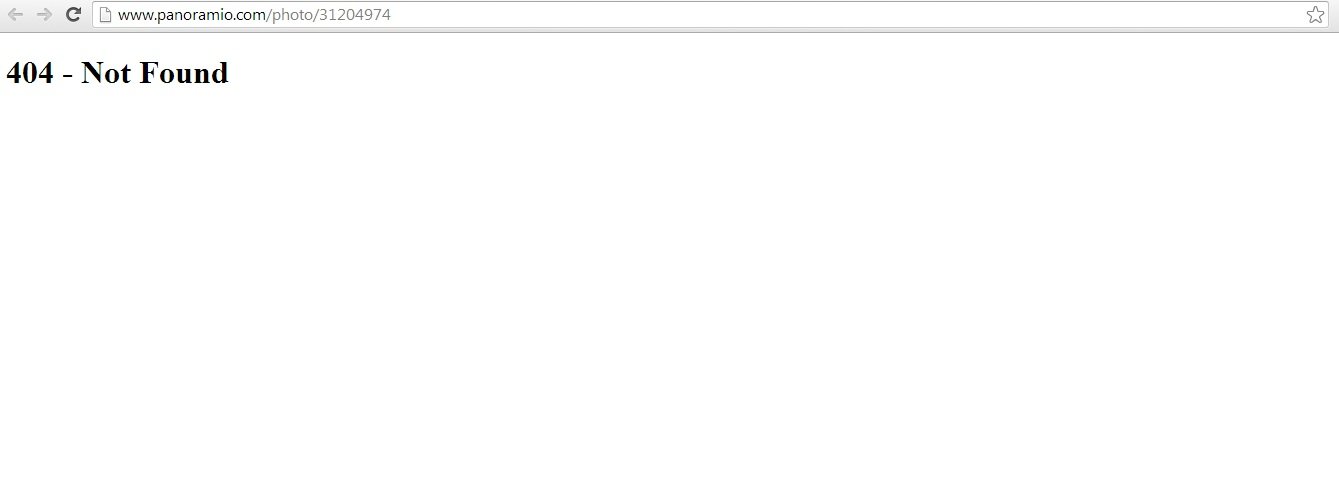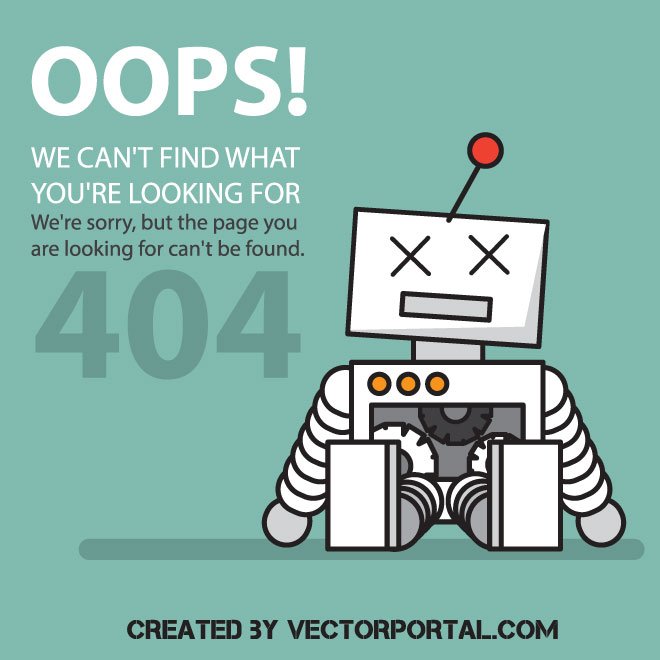In the captivating world of search engine optimization, amidst the ever-evolving techniques and strategies, there exists an enigma that has stumped even the most seasoned digital enthusiasts—the perplexing realm of 404 errors. Ah, the 404 error, a mysterious glitch that appears before our eyes, leaving us pondering, frustrated, and desperately seeking answers. What sorcery lies behind this peculiar phenomenon, and, more importantly, how can we unravel its mystifying riddles to triumphantly restore our website’s search engine glory? Join us on an exhilarating journey of discovery as we unravel the secrets of the SEO conundrum, decoding 404 errors and unlocking the elusive fixes that lie within. Prepare to embark on a quest that will change the destiny of your online visibility forever!
Table of Contents
- Understanding the Impact of 404 Errors on SEO Performance
- Identifying Common Causes of 404 Errors and Their Effects on User Experience
- Implementing Effective Strategies to Fix 404 Errors and Improve Website Rankings
- Utilizing Best Practices for Preventing Future Instances of 404 Errors
- Q&A
- The Way Forward

Understanding the Impact of 404 Errors on SEO Performance
404 errors can be a baffling mystery for SEO beginners, but fear not! Understanding the impact of 404 errors on your SEO performance doesn’t have to be an enigma. Let’s unravel this conundrum and explore the fixes that can unlock better search engine rankings.
One way to decode 404 errors is by thinking of them as roadblocks on the information highway. When a user stumbles upon a broken link or deleted page, they are greeted with a 404 error message. Just like a dead-end in real life, 404 errors can frustrate users and deter search engines from properly crawling and indexing your website. So how does it impact your SEO? Here are some insights to consider:
– SEO Rankings: 404 errors can harm your website’s rankings on search engine result pages (SERPs). When search engines encounter too many broken pages or links, they may perceive your site as low quality or unreliable.
– User Experience (UX): 404 errors can ruin the user experience by presenting an abrupt dead-end to visitors. It’s like promising a delicious dessert but serving an empty plate instead. This can lead to high bounce rates and lower engagement.
– Lost Opportunities: Each broken page is a missed chance to attract organic traffic and potential customers. Visitors who would have converted into leads or made purchases might never reach your intended destination.
- Credibility and Trust: If your website has numerous 404 errors, it may reflect poorly on your brand’s reliability and professionalism. Users are less likely to trust and recommend a site that consistently leads to dead-ends.
To combat these challenges, it’s essential to fix 404 errors promptly. Stay tuned as we dive into effective solutions to unlock a smoother SEO experience and improve your website’s search engine rankings!
Identifying Common Causes of 404 Errors and Their Effects on User Experience
While browsing the web, we’ve all encountered those frustrating “404 Error: Page Not Found” messages. But did you know that these errors can have a significant impact on user experience and even your website’s SEO? In this post, we’ll dive into the common causes of 404 errors, their effects on user experience, and unlock some actionable fixes to improve your website’s performance.
1. Dead or Broken Links: One of the most common causes of 404 errors is when a link on your website points to a page that no longer exists or has been moved. This can happen when you update your website’s structure or remove outdated content. To fix this, regularly review and update your internal and external links, ensuring they lead to the correct pages. Consider using the “301 Redirect” technique to automatically redirect users to the appropriate page if a URL has changed.
2. Typo in URLs: Another mistake that might result in a 404 error is a simple typo in the URL. A missing letter or an extra character can lead to a broken link and a frustrating user experience. Double-check your URLs and use tools like spellcheckers to minimize these errors.
3. Externally Linked Content: If your website relies on externally linked content, such as images, videos, or documents, it’s crucial to ensure that those external sources are reliable. If a linked resource is removed, moved, or expired, it can trigger a 404 error on your page. Regularly check these external links, and if necessary, replace or update them to maintain a seamless user experience.
404 errors may seem minor at first glance, but they can have a significant impact on your website’s performance and user satisfaction. By identifying and addressing the common causes of these errors, you can improve your website’s SEO, retain visitors, and ultimately enhance the overall user experience. Stay tuned for more insights and tips on how to optimize your website for better results.
Implementing Effective Strategies to Fix 404 Errors and Improve Website Rankings
404 errors can be a significant obstacle when it comes to optimizing your website for search engines. These errors occur when a page is not found by the server. In addition to frustrating users, they can also harm your website’s rankings. Fortunately, there are effective strategies you can implement to fix 404 errors and improve your website’s overall ranking.
One important step in addressing 404 errors is to identify and redirect broken links. This involves finding the pages where the broken links exist and either fixing them or redirecting them to a relevant page. By doing this, you not only improve the user experience but also ensure that search engine crawlers can find and index all your content effectively. Additionally, regularly monitoring your website for broken links is crucial to minimize the occurrence of 404 errors. Consider using tools like Google Search Console or broken link checkers to identify and fix these errors promptly.
Another strategy to fix 404 errors and boost your website rankings is to create custom error pages. These pages, also known as 404 error pages, can be customized to provide a helpful and user-friendly experience when visitors encounter a broken link or mistype a URL. When designing these pages, make sure to include a clear and concise message explaining that the page they are looking for cannot be found. You can also utilize this opportunity to offer suggestions or links to other relevant pages on your website. By providing a positive user experience even when errors occur, you can help retain visitors and potentially convert them into loyal users.
Utilizing Best Practices for Preventing Future Instances of 404 Errors
One of the most frustrating experiences for both website visitors and search engine crawlers is encountering a 404 error – that dreaded “Page Not Found” message. The impact of these errors goes beyond just a poor user experience; they can also harm your website’s search engine rankings. But fear not! By implementing best practices, you can prevent future instances of 404 errors and improve your website’s overall performance.
To start, regularly monitoring and auditing your website is essential. Use tools like Google Search Console to identify any broken links or pages that return 404 errors. Once you have identified these issues, prioritize fixing them based on their impact on user experience and importance to your website’s goals. Now, let’s dive into some best practices to minimize the occurrence of 404 errors on your website:
1. Implement proper 301 redirects: When a page is permanently moved or no longer exists, use 301 redirects to redirect the user or search engine to a relevant, working page. This ensures a smooth transition and helps retain valuable traffic and search rankings.
2. Customize your 404 error page: Rather than displaying a generic error message, create a custom 404 error page that provides helpful information, such as links to your most popular pages or a search bar. This keeps users engaged and encourages them to find what they were looking for despite the error.
3. Regularly update and maintain your website: Ensure that all internal and external links are still valid and lead to live pages. Additionally, remember to update your sitemap and robots.txt file to reflect any changes made to your website’s structure or content.
By taking these preventative measures and utilizing best practices, you can minimize the occurrence of 404 errors on your website. Not only will this enhance your website’s user experience, but it will also contribute to better search engine optimization and ultimately improve the visibility and success of your online presence.
Q&A
Q: What is “” all about?
A: This intriguing article dives into the world of SEO and addresses one of its most perplexing challenges: 404 errors. Get ready to unlock the secrets behind these frustrating errors and discover how to fix them for improved search engine optimization.
Q: What are 404 errors and why are they such a conundrum?
A: Ah, the enigmatic 404 error! It’s that dreaded message you encounter when a webpage cannot be found. These errors occur when a user tries to access a page that no longer exists or has been moved without a proper redirect in place. The conundrum lies in the fact that they can negatively impact SEO efforts, potentially lowering website rankings and reducing user experience. But fear not, for this article is here to decode the mystery and provide practical fixes!
Q: How can 404 errors affect my website’s SEO?
A: 404 errors can significantly impact your SEO by frustrating users and search engines alike. When search engine bots encounter a 404 error, they assume that the page is no longer relevant and may devalue it in search rankings. Moreover, if visitors stumble upon too many broken links or missing pages, they might leave your website in frustration, resulting in higher bounce rates and a negative user experience that search engines may interpret as poor quality.
Q: How can I identify and decode 404 errors on my website?
A: Decoding 404 errors begins with gaining visibility over them. This article will walk you through various methods and tools to effectively identify broken links and pages. From website crawlers to Google Search Console, you’ll learn how to spot those pesky 404 errors hiding in the shadows of your website.
Q: What are some common causes of 404 errors, and how can I fix them?
A: The causes of 404 errors can vary, but fear not, as this article sheds light on some common culprits. From deleted or renamed pages to broken internal links, you’ll uncover the secrets behind these errors and obtain actionable solutions. Whether it’s implementing proper redirects, updating internal links, or tightening your website’s structure, this article has got you covered.
Q: Can fixing 404 errors really improve my website’s SEO?
A: Absolutely! By decoding and fixing those pesky 404 errors, you have the opportunity to enhance your website’s SEO. By eliminating broken links and redirecting lost pages, search engines can better navigate your site and assign appropriate value to each page. Moreover, providing a seamless user experience increases the likelihood of visitors staying on your site, engaging with your content, and ultimately boosting your search engine rankings.
Q: Are there any additional benefits to fixing 404 errors?
A: Absolutely! Aside from the obvious SEO advantages, fixing 404 errors can improve your website’s overall user experience. When visitors encounter fewer broken links and missing pages, they are more likely to trust your website, staying longer and exploring further. This can lead to increased conversions, higher customer satisfaction, and ultimately a stronger online presence.
Q: Any final tips to share regarding 404 errors and SEO?
A: As a parting gift, this article provides some handy tips and best practices to help you tackle 404 errors like a seasoned pro. From regularly auditing your website for broken links to setting up custom 404 pages, these additional pearls of wisdom will ensure you’re always one step ahead in the SEO game. So buckle up and get ready to conquer the conundrum of 404 errors!
Remember, with the right knowledge and proper fixes, you can unravel the mysteries of 404 errors and give your website’s SEO the boost it deserves. Dive into “” now!
The Way Forward
As we bid adieu to the intricate world of SEO conundrums and the perplexing maze of 404 errors, we emerge with newfound knowledge and unyielding determination. Unlocking the secrets behind these digital enigmas has been no small feat, but our unwavering resolve has guided us through uncharted territories.
In our quest to decode the mysteries of 404 errors, we have uncovered the underlying causes that can leave any website owner in a state of despair. From broken links to obsolete pages, the treacherous paths leading to these errors are tinged with frustration and disappointment. But fear not, for we have also unearthed the magical keys to remedying these ailments.
With each painstaking discovery, a sense of achievement known only to the intrepid explorers of the digital realm fills our hearts. Armed with this knowledge, we stand tall, ready to vanquish the 404 beasts that lurk in the depths of cyberspace.
But our journey does not end here; it is merely a prelude to the countless mysteries still awaiting our unruly minds. As the digital landscape evolves, new conundrums will surely emerge – challenges that demand our unwavering commitment to unraveling their complexities.
So, dear reader, as we wave goodbye to this particular conundrum, let us take a moment to reflect on the lessons learned. The SEO world is a never-ending puzzle, an ever-shifting terrain that demands constant adaptation. But with tenacity and a thirst for knowledge, there is no riddle we cannot conquer.
May you march forth with courage, armed with the keys to decode 404 errors and unlock the fixes. And may your digital journey be filled with triumph and discovery, as you navigate the labyrinthine path towards SEO mastery.

